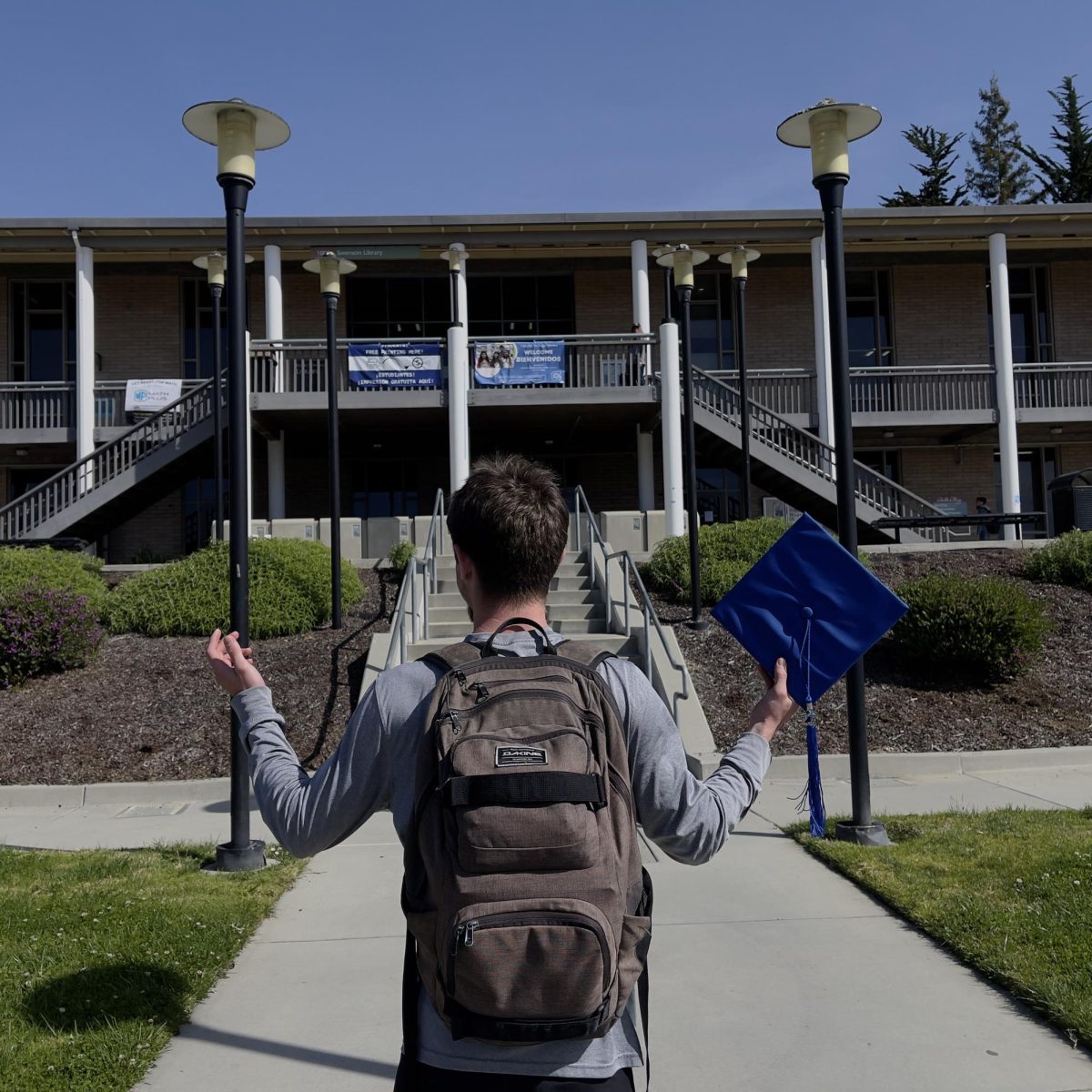
While many Cabrillo students are up all night studying, Jessica Bruntz has a different problem. She has to make dinner for her 5- and 10-year-old children.
“I can’t just make a Cup O’ Noodles for myself and keep studying. Kids need real food.”
She’s one of an unknown number of parents, single and otherwise, attending the 13,500 student community college.
While the school keeps track of disabilities, race, gender and age, it doesn’t list how many students are raising children. That’s a problem, some students say.
The only question that touches on parenthood on new student intake forms asks whether the applicant has to deal with child care.
One could find out how many people answered yes to that question, but that number would not reflect how many parents (single or otherwise) there are attending classes and/or need support services. Cabrillo students who are parents say what they need most is time. Under a new state plan called Guided Pathways, students may have to take 15 units a semester to complete their education in three years, something parents say they don’t have time for.
Bruntz, 31, the mother of two, is quad majoring in accounting, business, criminal justice and liberal arts. This semester she is taking 19 units in a mad dash to graduate by the end of this year. She is a low-income single mother, which makes her eligible for a county voucher program that covers the cost of child care while she is in school full time.
Her hope is to concentrate on international business with a minor in finance when she transfers to a four-year college so she can set herself up to be financially independent.
“It would be nice if the child care program on campus had more availability rather than being waitlisted,” said Bruntz, who has been on this waitlist for three years. She said most child care providers close at 5 p.m., and her biggest problem is finding child care for a required class offered only in the evening.
Bruntz has been on the list since 2015.

“I actually don’t even come to the top of the waitlist until the semester before I graduate,” said Bruntz. “I signed up when I first got here. So if you’re pregnant you better sign up.”
Students lose their place on the list if another who makes less money applies.
“It’s a very complicated system and one that does not seem fair to many,” said Tricia Pastor Cross, the director of the department.
And as it turns out by the time Bruntz reaches the top of the list her child will have just turned six, and five is the cutoff.
Cross said. “We adhere to the state guidelines as that’s where the majority of our funding comes from. Without the funding, we could not exist.”
Nearly all of the program’s funding comes from the state’s Child Department of Education.
Another mother, Jessi D., 30, who did not want her last name used to protect her family’s privacy, is a sociology major who hopes to find a career in policy analysis. She has found child care in a unexpected place — her gym.
For $70 a month the gym’s day care looks after her youngest two everyday for two hours in the morning and two hours in the afternoon. And that includes access to all gym amenities.
Jessi has four children between ages 3 and 15 and they all have different needs that are difficult to attend to while she’s taking 11 units and maintaining her eligibility for the honors program.
Jessi said she struggles with feelings of “anxiety about being a parent taking care of things and being a student taking care of things.”
And then there’s the quandary every mother faces—
“Guilt whenever it comes to being away from your family especially being a female, because there are all these expectations to take care of your family and be there for your kids and your spouse.”
She imagined how much more time she would have if she could have her children on campus at a care facility, instead of dragging them to the gym.

It’s going to get even harder for parents. In 2018-19 campuses will receive funding based on how many people graduate within three years, putting pressure on campuses to require students to move through even more quickly.
President Wetstein said the college has a responsibility to consider the needs of students with children. “It depends on what patterns the college offers its courses, to fit with the life needs of the students.”
Cabrillo has some programs for parents, but many don’t even know about them.
Taj Leahy works six hours a week, but his income when combined with his partner’s teaching salary disqualifies them for most programs that assist parents.
“Either we make slightly too much money (or it’s a matter of) trying to take the time to fill out all the information. There is a lot of hoop jumping, and it takes hours.”
Leahy, 39, is a full time student, studying drug and alcohol counseling in hopes to do some good while making a living. He and his partner take turns with the parenting responsibilities for their 8-month-old and 4-year-old. They have the oldest in preschool three days a week for $170 a month. He said the Extended Opportunity Programs and Services (EOPS and CARE program) and other grant opportunities haven’t been on his radar because there are so many misconceptions about who the program benefits.
“I should have known about these. I’ve been going here for semesters. Why isn’t this more publicized?”
As for finding time for himself, Leahy said, “You must be kidding me. Like, just by myself? Foreign concept.”

Students who are parents at Cabrillo’s Watsonville campus are struggling to get by just as much, and they frequently feel ignored.
Margarita Navarro, 28, a single mother working six days a week, is struggling to find the resources to help ease her stress. Navarro returned to community college last year and is taking 13 units.
She wants to work as a physician’s assistant in the Health and Science Department, but, “Honestly, how am I going to afford it? Am I going to just get in all this debt with loans?” The future of her education depends on how financial aid works out.
“Making a choice to go back to school was tough,” Navarro she said. She returned to school worried about who was going to take care of her 8-year-old daughter. At one point, she found herself considering the possibility of bringing her daughter to class. Eventually, the stress led her try to take advantage of the therapy that Cabrillo provides, but found that the Watsonville campus offers extremely limited hours.

“Why (doesn’t Cabrillo) have more services available? The students in Watsonville need counseling.” She has been floundering on the back burner for over a year waiting for an appointment.
Jessica Valentin contributed to this story.






